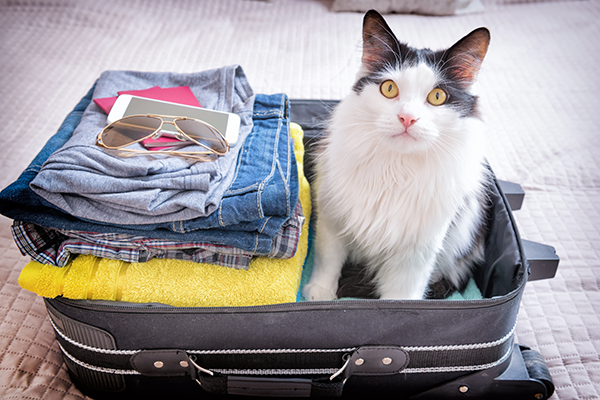Moving With Pets

Making the transition to a new home can be as hard for pets as it is for humans - sometimes, even more so. Pets don’t understand what’s happening. Suddenly there are new smells, sounds, routines, and expectations. Even the best-behaved pet can start to show signs of anxiety and stress.
Here are some tips for moving with pets and helping them cope during a chaotic time.
Prepare Medications and Get Vaccinations
Before the move, make sure your pet is up to date on vaccinations. Purchase any medications and treatments they’ll need in the months after the move, because you’ll be busy settling into your new home.
If your move will be crossing state lines, contact your veterinarian beforehand to request a full pet health record. Be prepared to present a pet health certificate in case an authority requests it.
Set a Good Example
Keep in mind that your pet is attuned to your emotions. If you’re a ball of stress, your pet might absorb those feelings and show signs of stress too. Spend extra time petting and reassuring them, so they know everything is okay.
Bring Along Favorites
Does your puppy have a special toy? Does your cat have a favorite blanket? Don’t pack these special items in a box! Keep them right by your pet’s side as you make the move. In fact, any item that smells like your previous home will give them comfort during the transition.
Keep their food the same, too. Now is not the time to introduce new food, treats, or toys. Save those for a time down the line, when your pet is feeling more secure.
Establish New Territory and Safe Space
Dogs and cats are most comfortable when they understand their territory. That’s why dogs urinate around the perimeter of your yard, and why cats are famous for their curiosity.
As soon as your pet arrives at your new home, establish a safe space for them. They need a quiet area free of boxes and movers. Allow some settling-in time. When your pet seems calm and curious about other spaces in the house, they’re ready to explore their new territory.
Maintain a Consistent Schedule
Another way make the transition smooth is to keep your previous schedule as much as possible. If you always fed your cat at 7 a.m. at the old house, do the same at the new house. Animals notice these routines and take comfort in them.
Have Patience and Check With Your Vet
Many pet owners ask their veterinarians about sedation during moving and travel. Sedation is not always the best choice. It can cause loss of balance and breathing problems, so it should only be used if pet anxiety is a serious issue. Don’t use any sedative on your animal unless it is from your veterinarian.
After the move, it may take days or weeks for your pet to settle in. Don’t worry too much if they often retreat to a corner or hide behind furniture. They might need a bit of time to feel safe.
If your pet’s anxiety seems extreme, or goes on for months, consult your veterinarian for advice. There may be other underlying issues that are making the move worse than it should be.
Before your next move, contact Academy Animal Hospital to ease the transition for your beloved pet.
If you have any specific questions or concerns about your pet, please contact us at Academy Animal Hospital, Greenwood, Indiana (317) 881-3125.
